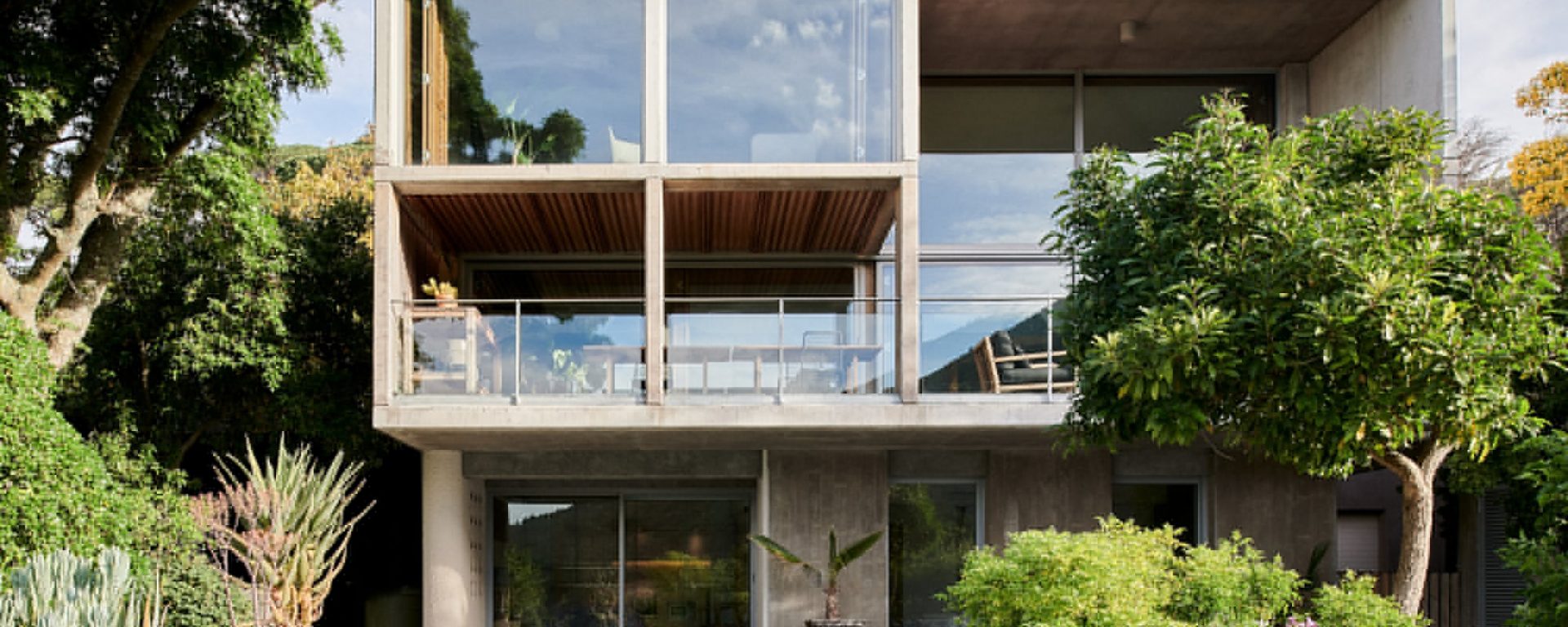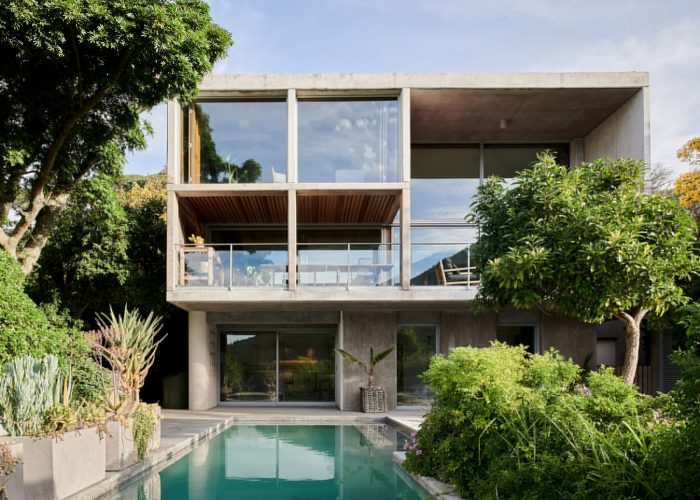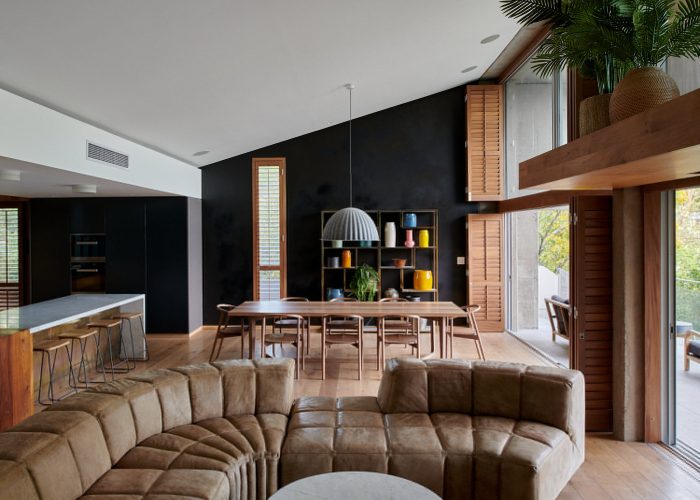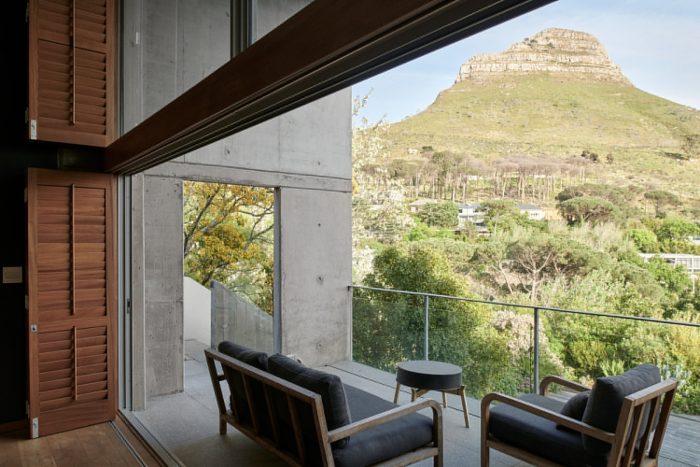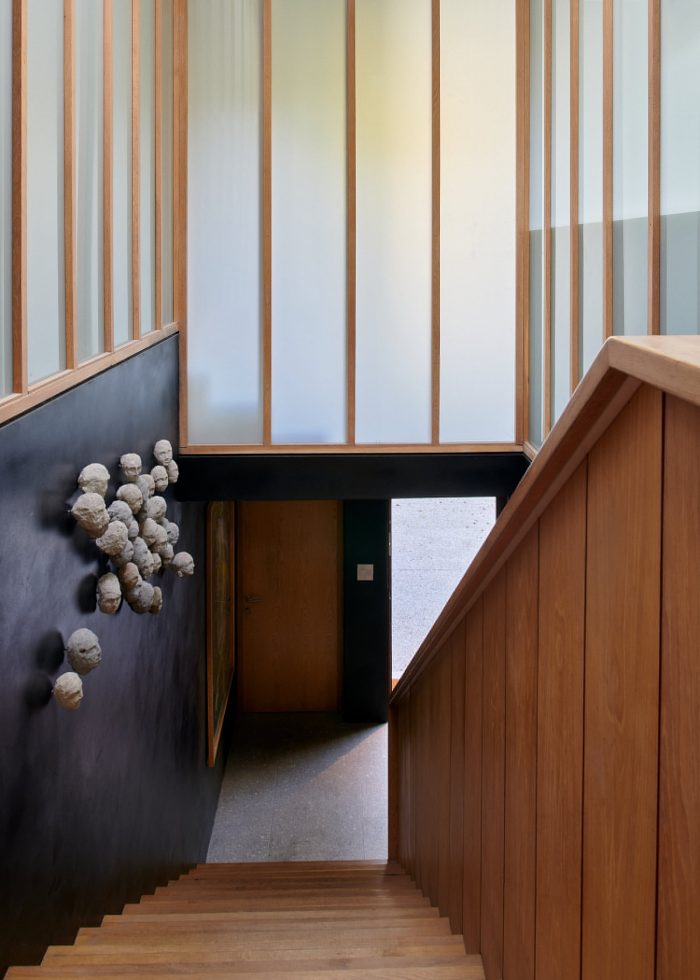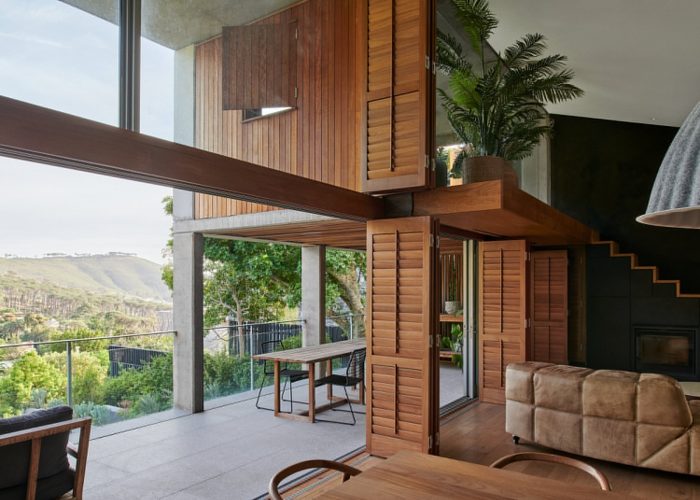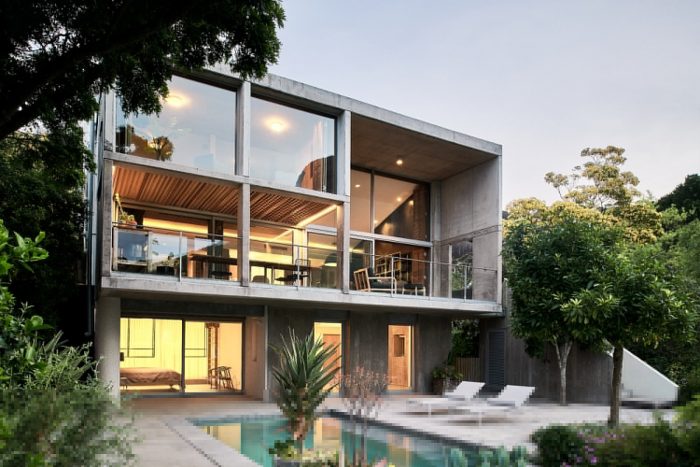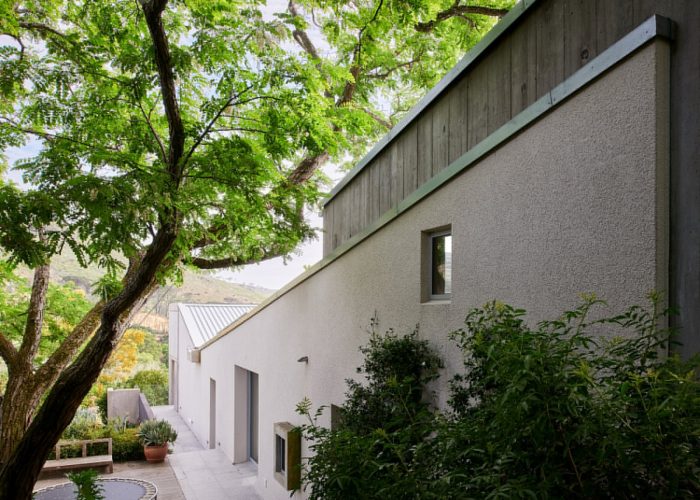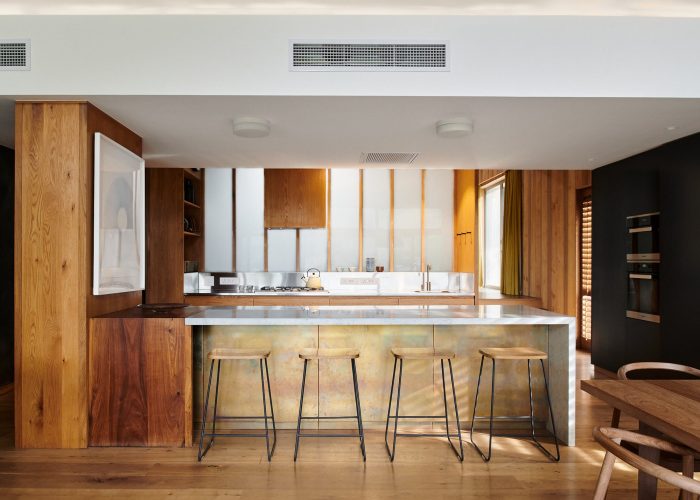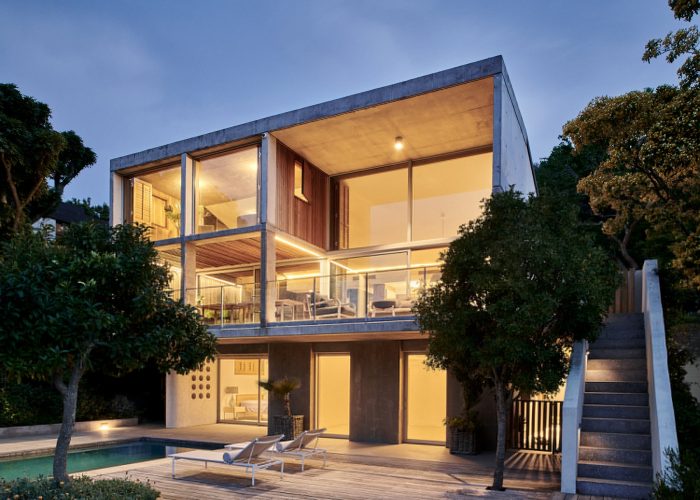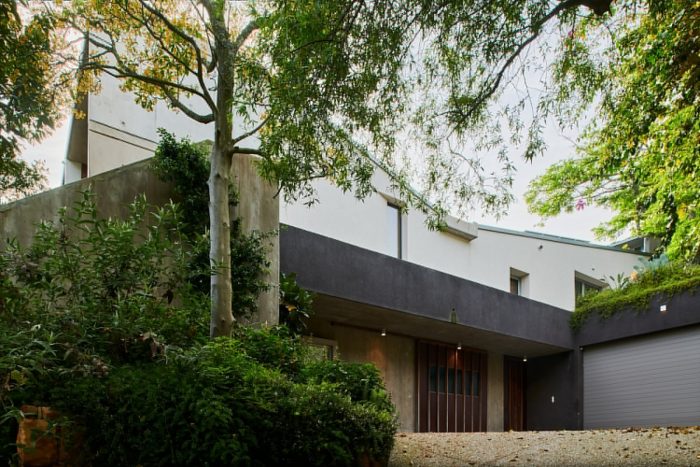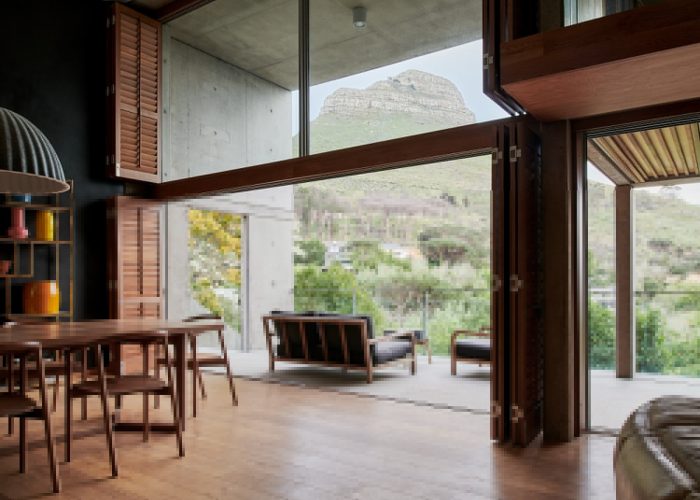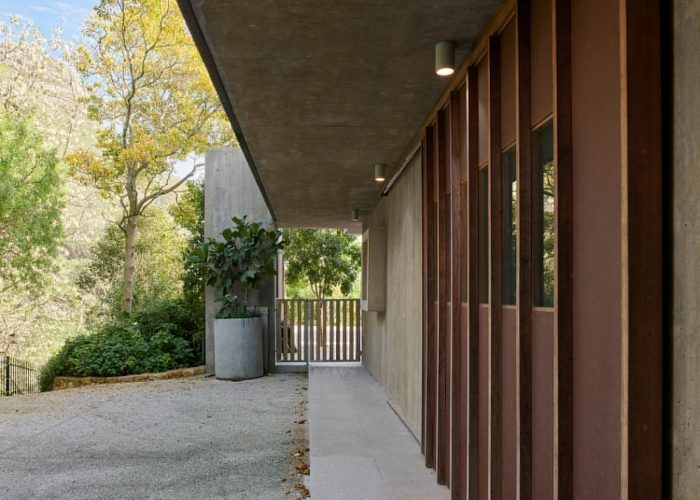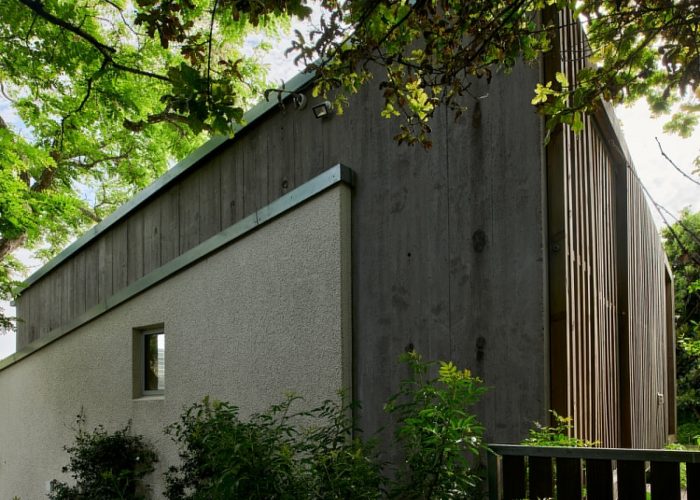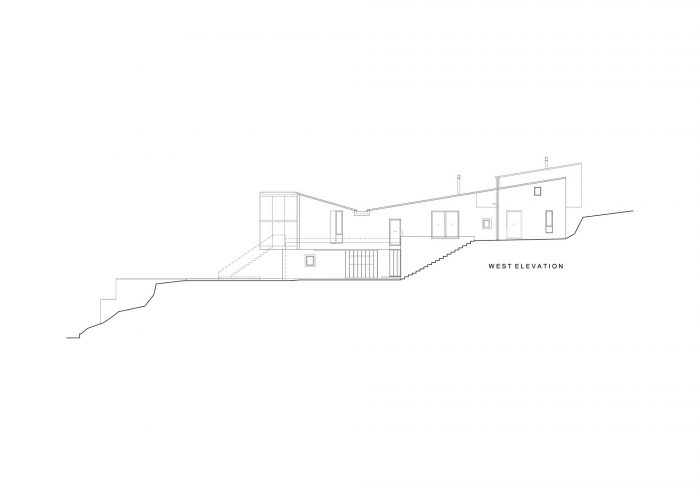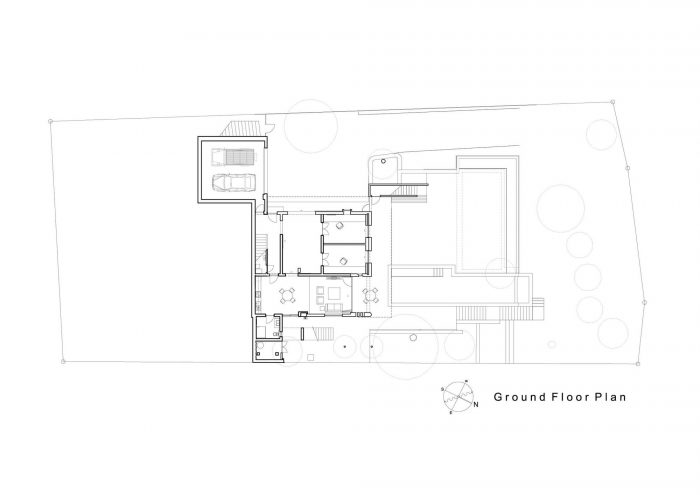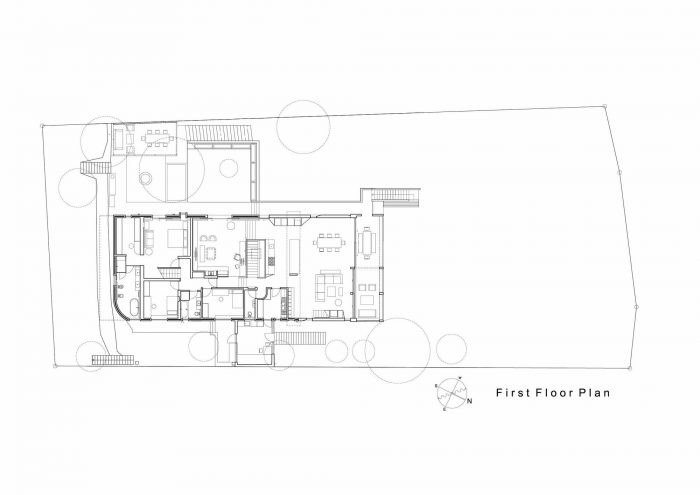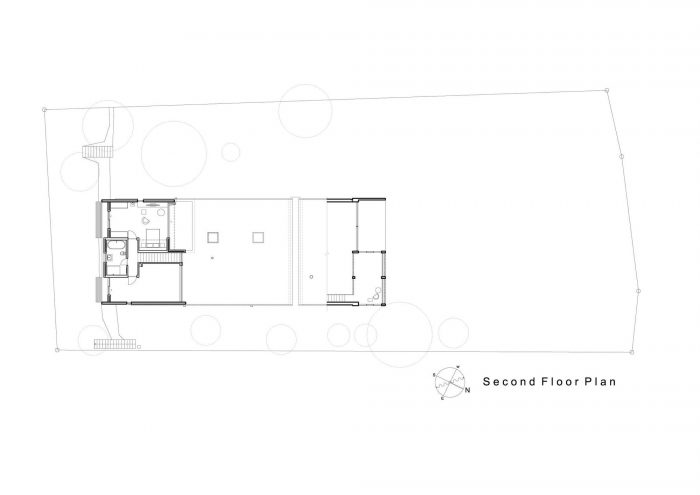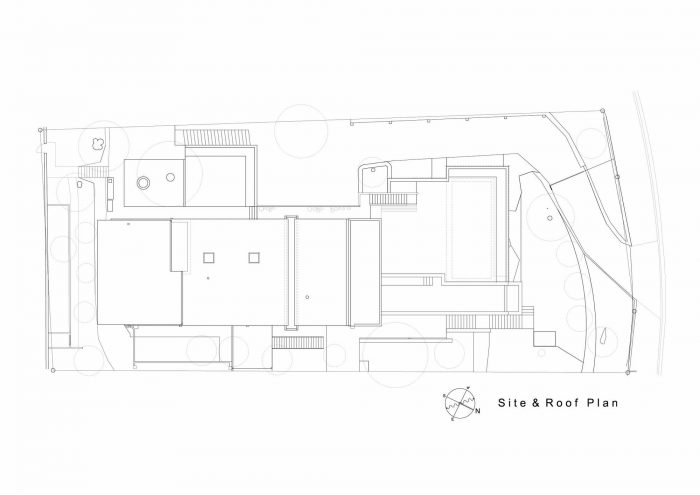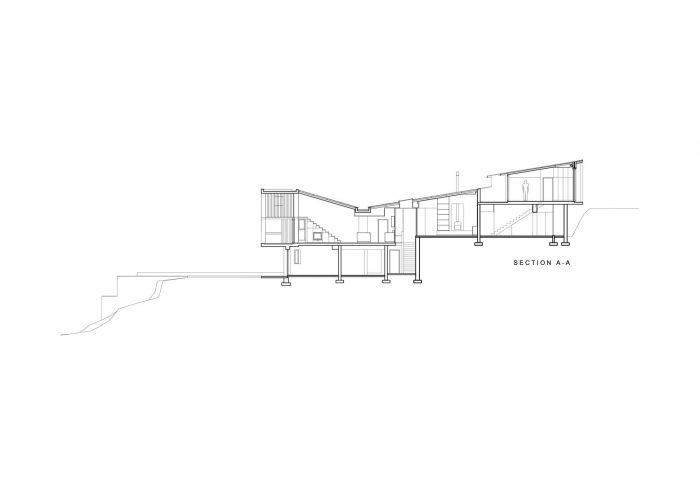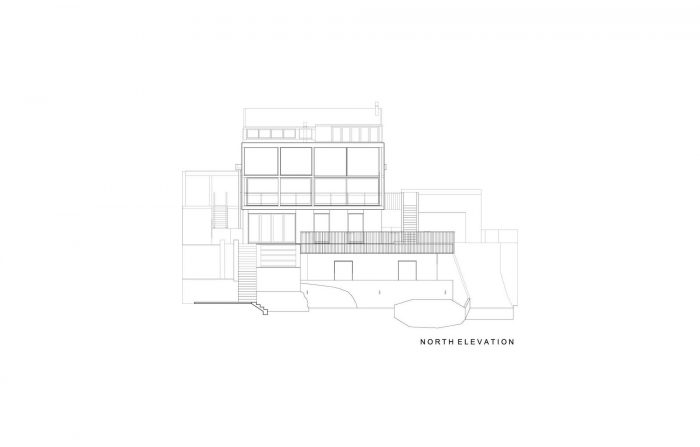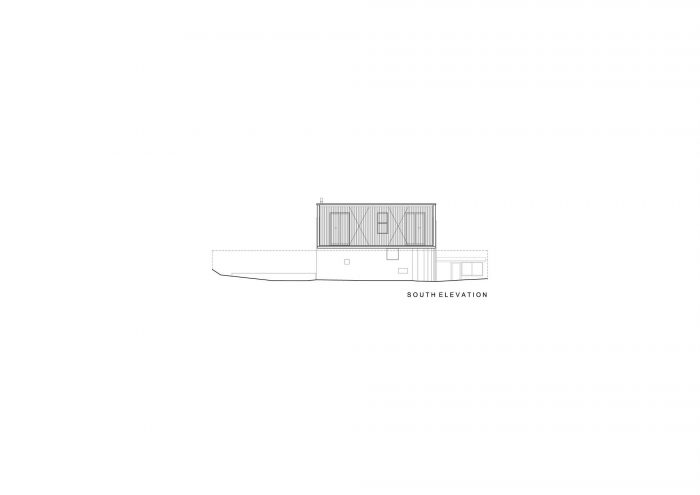这座房子位于桌山的城市上坡,在山地保护区的边缘。它坐落在一个美丽的花园里,有成熟的野李子树和梯田,一直延伸到街道。房子的规划是一个横跨斜坡的长方形,重新使用了旧结构的挡土墙和脚印,以便不干扰现有的树木和花园。房子通向三个独立的花园露台,处于不同的水平。
The house is set on the upper city slopes of Table Mountain, at the edge of the Mountain Reserve. It sits in a beautiful established garden site with mature wild plum trees and terraces stepping down towards the street. The house plan is a rectangle arranged across the slope, reusing the retaining walls and footprint of an older structure, so as not to disturb the existing trees and garden. The House opens onto three separate garden terraces, at different levels.
在一楼,房子提供了灵活的工作空间,包括一个工作室、办公室和一个公寓。一楼是主要的生活空间和卧室。二楼包括卧室和一个游戏室。房子的正面被衔接成一个可居住的天窗。这个结构框住了狮子头山的双卷景观,同时调节阳光,并包括一个阳台和一个乌鸦窝。
On the ground floor, the house provides flexible working spaces, including a studio, offices, and a flat. On the first floor are the main living spaces and bedrooms. The second floor includes bedrooms and a games room. The front of the house is articulated as an inhabitable brise soleil. This structure frames a double-volume view of Lions Head mountain while regulating the sunlight and encompassing a verandah and a crow’s nest.
主通道位于房子的中间,作为一个巨大的铰接式灯笼,白天从上面自然照明,晚上人工照明,将柔和的散射光带入邻近的空间。生活空间被一个蝴蝶形的屋顶所遮挡,中间有巨大的集水通道,为雨水箱提供水源。倾斜屋顶的轮廓允许下面有各种有趣的空间,有不同的天花板高度和坡度,既有高的房间,也有低的渐变空间。
The main circulation is positioned in the middle of the house and acts as a giant articulated lantern, which is naturally lit from above in the daytime and artificially lit at night, bringing a soft diffused light into the adjacent spaces. The living spaces are sheltered by a butterfly-shaped roof with giant water collecting channel in the middle, supplying rainwater tanks. The profile of the sloped roof allows for a variety of interesting spaces below, with differing ceiling heights and slopes, both high rooms and low tapering spaces.
通过滑动墙,这些空间是灵活的、可转换的,可以有各种不同的用途。房子的材料主要是砖和石膏墙,还有一些非百叶窗混凝土、钢和木材。这座房子在很大程度上是离网的,其设计在很大程度上是以被动的方式来调节气候的。整体印象是一艘 “搁浅的船”,坐在树丛中,逐渐与花园融为一体。
With sliding walls the spaces are flexible and transformable, allowing for a variety of different uses. The materials of the house are largely brick and plaster walls, with some off shutter concrete, steel and timber. The house is largely off-grid and designed to largely modulate the climate in a passive manner. The overall impression is of a ‘beached ship’ sitting amongst the trees and gradually merging into the garden.
Architects: Daniel Maggs Architects
Area : 462 m²
Year : 2018
Photographs :David Malan
Lead Architects : Daniel Maggs Architects
City:CAPE TOWN
Country:South Africa

